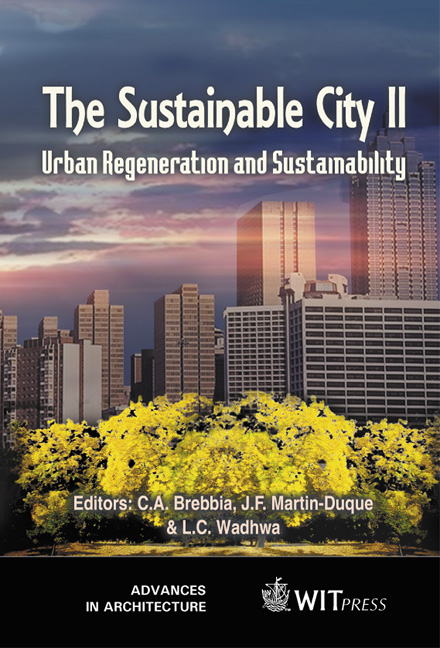The \“sensitive Relief” And Urban Planning: A Cultural Approach To The Sustainable City Construction
Price
Free (open access)
Transaction
Volume
54
Pages
Published
2002
Size
544 kb
Paper DOI
10.2495/URS020331
Copyright
WIT Press
Author(s)
M Sepe
Abstract
The \“sensitive relief’ and urban planning: a cultural approach to the sustainable city construction M. Sepe I. Pi, Ge. T., Istituto di Pianijkazione e Gestione del Territorio, Consiglio Nazionale delle Ricerche, Naples, Italy. Abstract The change of interpersonal relationships and intergenerational gaps, the new demands connected to this change, the technological development, the globalisation process etc., have caused a transformation of the places of the city. New typologies of spaces were born and the way of utilisation of those already existing has been modified. This work is aimed at improving the understanding of this logic in order to comprehend how the elements representing the ecological and sustainable approach may be compared with a society in a continuous evolution. The city is not an artificial construction: the city is a whole of mood, habits, customs and life style. The interrelations between these elements and the spin-off for ecology and sustainability are various and cannot be easily read in a singular and unique way, but in their conversion into the identity of the places and the identification of the city. To analyse these pieces of the city it is necessary to observe a wide number of individual and collective subjects operating in different social places, whose behaviour has generated new cultural problems: degree of tolerance, compatibility and incompatibility with other people, their uses, activities, noises and odours. The identification and the decomposition of reality in its elements simplify the complexity and generate different data interpretations and reassembling. Starting from a \“sensitive relief’ of the urban environment, this work is aimed at identifying the set of the elements representing the contemporary identity, whose rereading and reconfiguration can contribute to the construction of a cultural and durable approach to the sustainable city and sustainable development.
Keywords





